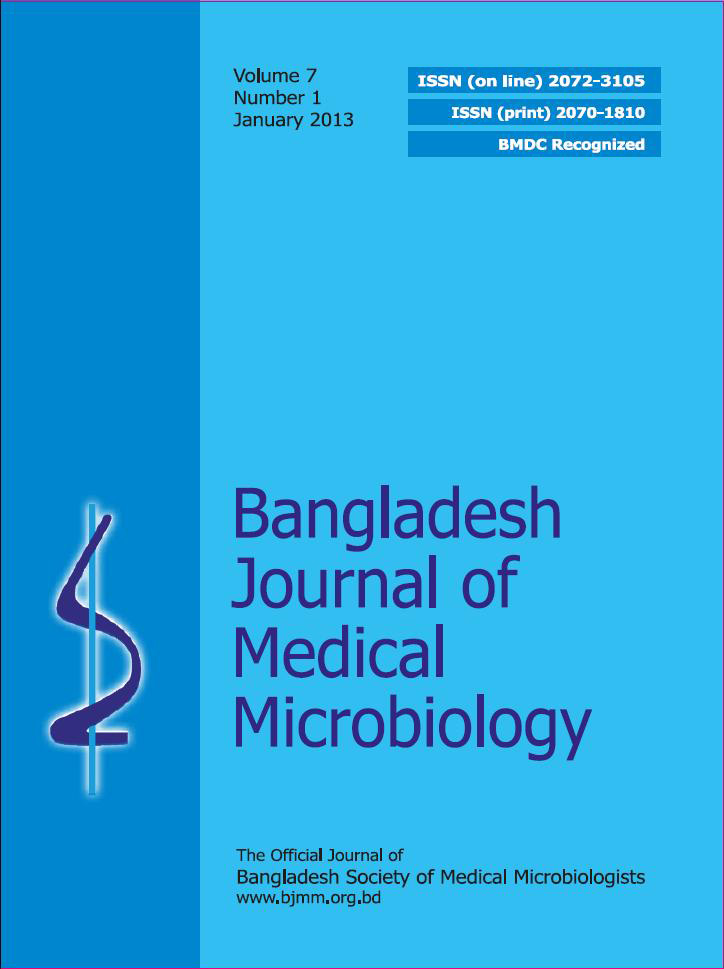Antimicrobial Resistance Patterns of Bacterial Isolates in a Medical College Hospital of Bangladesh, 2005-2006
DOI:
https://doi.org/10.3329/bjmm.v7i1.19316Keywords:
Antimicrobial susceptibility, antibiotic resistant, trendsAbstract
Current knowledge on antimicrobial susceptibility pattern is essential for quick and appropriate therapy. But, despite the seriousness of the problem, available data on antibiotic resistant pathogens are limited in Bangladesh. For this reason, the present study have been undertaken to determine the antibiotic susceptibility patterns of isolated bacterial strains to guide the clinician in selecting the best antimicrobial agent for an individual patient and to accumulate epidemiological information for public health importance. Isolates were identified by conventional methods from different samples of urine, blood, pus, wound swab, stool, high vaginal swab and pleural fluid from patients attending to Sir Salimullah Medical College and Hospital in Dhaka, Bangladesh between January 2005 and October 2006. Antimicrobials susceptibility testing was performed by Kirby Bauers disc diffusion method and reported according to CLSI guidelines. Of the 1592 different tested samples, 779 showed growth of pathogens, among which the most prevalent gram negative bacilli were Escherichia coli (71%) followed by Pseudomonas (8%) and Klebsiella (5%). Staphylococcus aureus (11%) was found as the most important gram positive resistant pathogens. The resistance pattern among gram negative bacilli was observed high against ampicillin, cephalexin, cotrimoxazole, nalidixic acid and ciprofloxacin. Staphylococcus showed almost same trend except ciprofloxacin and nalidixic acid. Most of the isolates were resistant to 4 or more number of antibiotics. Available antimicrobials with good activity against resistant pathogens include ceftriaxone and imipenem. The role of fluoroquinolones in the empiric treatment of bacterial infections is also being limited by new resistance patterns and increasing resistance levels, resulting a considerable economic and health burdens on our country.
DOI: http://dx.doi.org/10.3329/bjmm.v7i1.19316
Bangladesh J Med Microbiol 2013; 07(01): 15-19
Downloads
279
272

